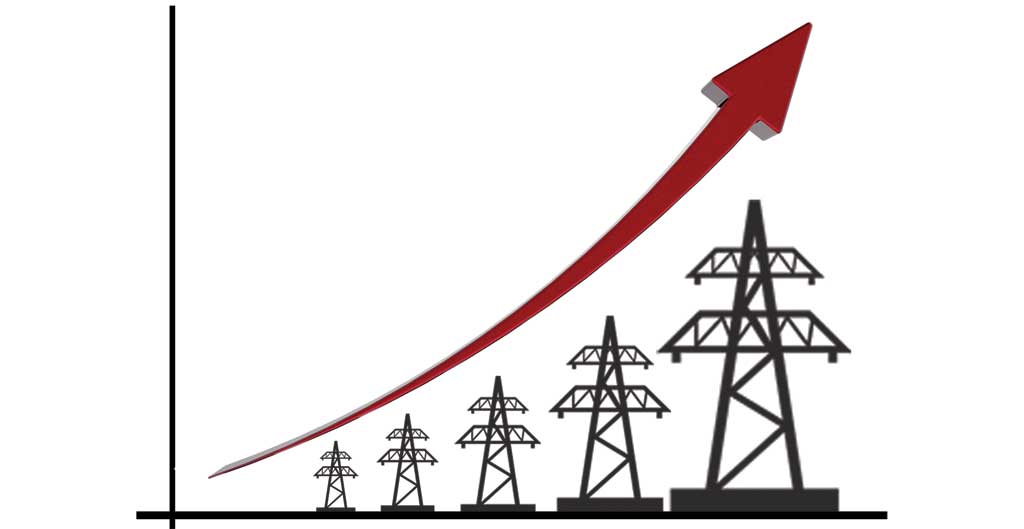Transformer Efficiency
By EPR Magazine Editorial August 12, 2017 2:20 pm IST
By EPR Magazine Editorial August 12, 2017 2:20 pm IST

What contributes to efficiency of distribution transformer
The transformer market in India is estimated to be over `12,000 crore where power transformers contribute 45 per cent of the total market and distribution transformers contribute 55 per cent. According to a research report published by Research and Markets, the power and distribution transformer market in India is expected to reach $2.9 billion by 2022.
The government’s initiatives towards strengthening the power transmission and distribution network will drive the market further. The government has projected an investment of `146,000 crore in power transmission sector by FY 2019 to strengthen the transmission network thus increasing the demand for power transformers.
Distribution transformer is a critical part of every power grid. Since all of generated electricity is distributed through transformers, reducing losses can enhance the efficiency of electrical networks overall. “Over the last few decades, the transformer technology has advanced significantly, and with innovations in materials, components, and manufacturing process, the modern distribution transformers are far more efficient than their predecessors,” opines Dr. Katsutoshi Toda, Managing Director, Toshiba Transmission and Distribution Systems (India) Pvt Ltd.
Under its ‘Make-in-India’ strategy, Toshiba Transmission & Distribution Systems (India) Pvt Ltd (TTDI) is taking a lead in manufacturing high efficiency, durable distribution transformers that have higher life cycle, thereby reducing life-span product cost. Since its inception, TTDI has made significant investments in creating an end-to-end manufacturing infrastructure to ensure high product quality. From product assembly, to fabrication, oil purification and conductor, most of the parts and materials are manufactured at TTDI’s factory in Hyderabad that makes its products cost effective with greater quality control and also ensure quick delivery. All such products that Toshiba offers are accredited internationally with Type Test Certificate for conformity to IEC standards and safety.
“Today, TTDI already has the world’s second largest market share in amorphous core distribution transformers, which limit losses at a low load factor,” Dr. Toda claims.
Efficiency depends primarily on designingSimilarly copper winding contributes to Cu losses, which is a coefficient of the temperature and in-turn loading factor. Kohli suggests, “Whilst procuring, the consumer should understand that all values provided by the vendor are subjected to specific loading and reference temperature, which may significantly differ for their in-operation condition.”
Be cautious while procuring
Distribution transformers are getting used in different States of India by many distribution companies (in different projects like DDUJJ, IPDS, APDRP etc) apart from private parties. Practically, nowadays rules regulations and guidelines of all distribution companies are very stringent on losses of transformers in line with all routine tests. Initially it was 3-Star, 4-Star under Bureau of Energy Efficiency and now it is BIS level-1, BIS level-2, BIS level-3. Summarised matter is that everywhere level is confined with loss figure at various loading pattern or different percentage of load of transformer. “Two types of losses are there for same ratings of transformer – copper loss or load losses are more or less same for same ratings of transformer but the no load losses could be minimised by using high grade of core or where losses are getting less on weight basis, and in turn total losses could be minimised but that could cost (total cost of transformer) a lot compare to normal supplied transformer by so called ‘street side manufacturer’,” explains Kamal Kumar Banerjee, Vice President Projects (T&D), Truvolt Engineering Company Pvt Ltd. Therefore, he suggests, “Before taking transformer from vendors many factors to be watched or needs to be gone through followed by credentials of test certificates.”
Kohli concludes by saying, “Fundamentally, the efficiency given by the manufacturer should be verified correctly, and with utilisation of claimed materials during production – should be meet for transformer entire lifetime. However, as we clearly understand, with cause of an incipient fault in the transformer, efficiency shall also suffer, since electrical energy cannot be destroyed, but it converts itself into thermal or heat energy, especially for the static equipment that a transformer is.”
We use cookies to personalize your experience. By continuing to visit this website you agree to our Terms & Conditions, Privacy Policy and Cookie Policy.